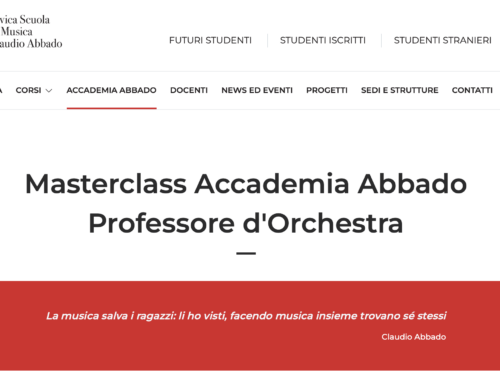THE LAW FOR MADE IN ITALY AND THE NOVELTIES FOR CULTURAL AND CREATIVE SECTOR
On 11 January last, the Law for Made in Italy (Law no. 206 of December 27, 2023 – hereinafter the “Law”) came into effect, containing organic provisions for the enhancement, promotion, and protection of Made in Italy. An articulated law that, among the many heterogeneous interventions contained within it, also includes provisions capable of positively impacting the cultural and creative industries. One of the sectors directly affected by the recent legislative intervention is, in fact, the cultural and creative sector, which is a recipient of part of the funds allocated by the Law.
- Objectives of the Law
Among the main objectives of the Law are precisely the promotion and enhancement, both in Italy and abroad, of Italy’s productive excellences and artistic and landscape beauties, considered strategic factors for the growth of the national economy, also through concrete support for cultural institutions present in the Italian territory.
Out of the 59 articles of the Law, divided into six titles, this writing examines some of the main novelties for the arts and creative sector.
- Trademark registration for institutes and cultural locations
Within Title IV, under the heading “Promotion Measures”, Article 22 is particularly relevant. This article recognizes the possibility for «institutes and cultural locations» to «register, pursuant to Article 19, paragraph 3, of the industrial property code, as per legislative decree no. 30 of 10 February 2005, the trademark that characterizes them» and to «grant the use of their trademark to third parties for consideration». The purpose for Italian cultural institutions and museums is twofold: «to increase knowledge of the cultural heritage and their ability to self-finance».
The referenced provision (Art. 19, paragraph. 3, Industrial Property Code – “IPC”) already allows «agency of the Country, regions, provinces and municipalities may also obtain the registration of trademarks […]» and that «the revenue resulting from the exploitation of the trademark for business purposes, including that carried out through the grant of licenses and for merchandising activities, must be used for financing institutional activities or covering any prior deficits of the entity».
However, so far, Art. 19, paragraph. 3, IPC has had a limited practical application, also due to a prevailing interpretative orientation that considered the trademark discipline incompatible with that concerning cultural heritage.
In addition, it should be noted that the recently introduced provision also allows the possibility of licensing registered signs to third parties against payment of a fee, thereby opening new opportunities and commercial operations for Italian cultural institutions and museums. This enables them to effectively utilize the symbolic elements of cultural heritage associated with their institution, aiming to enhance their global visibility and generate financial resources independently.
- New discipline for cultural enterprises and professionals
The Law also establishes a comprehensive framework of provisions (Articles 25-30), related to the cultural production sector, encompassing cultural enterprises and professionals, particularly the so-called “digital creators”. This has significant positive implications for this sector, which had previously been subject to fragmented and disjointed regulation.
For the first time, a clear and concrete definition of “cultural and creative enterprise” in outlined, so as to define the perimeter of the characteristics that distinguish these productive realities. This definition is drawn from the one used by the European Commission for “Creative Europe”, a funding programme dedicated to culture.
Article 25 identifies the cultural and creative enterprise, attributing the qualification to:
- private entities (enterprises and companies) and self-employed workers engaging in «stable and continuous activity» in Italy or in the European Union or the European Economic Area, provided they are taxpayers in Italy. The activities identified are: «conception, creation, production, development, dissemination, promotion, conservation, research, enhancement and management of cultural goods, activities and products». These activities, whether individually or collectively, must be carried out «exclusively or prevalently». Therefore, the definition provided by the Law focuses not on the activities declared in the corporate purpose, a criterion that could be excessively generic and susceptible to expanding the category, but on the activities that the enterprises actually carry out, specifically, exclusively or prevalently;
- private entities, established in the aforementioned forms, that «exclusively or predominantly, carry out, economic activities that are supportive, auxiliary or in any case strictly functional to the conception, creation, production, development, dissemination, promotion, conservation, research, valorisation or management of cultural goods, activities and products».
The latter category includes Third Sector Entities that carry out their activities exclusively or primarily in the form of an enterprise (Legislative Decree No. 117/2017, Art. 11, paragraph 2), social enterprises, as well as associations and foundations that carry out one or more of the above-mentioned activities exclusively or predominantly in the form of an enterprise.
For the definition of “cultural goods”, the Law refers to Art. 2, paragraph. 2 of the Cultural Heritage and Landscape Code (Legislative Decree no. 42/2004), defines “cultural activities and products” as «goods, services, intellectual works, as well as the processes related to them, and other creative expressions, individual and collective, also not intended for the market, inherent to music, audiovisual and radio, fashion, architecture and design, visual arts, live performances, tangible and intangible cultural heritage, artistic handicrafts, publishing, books and literature».
Furthermore, another certainly innovative provision is Article 27, which establishes the figure of “digital creators” as «artists who develop original works with high digital content» and provides for a specific repertoire in the general public register of protected works, referred to in Article 103 of the Copyright Act (Law No. 633/1941), to protect the rights of «original works with high digital content».
- The register of cultural and creative enterprises of national interest and a specific section in the Business Register
Significant is also paragraph 8 of Article 25, which establishes that cultural and creative enterprises must register in a specific section established at the Chambers of Commerce, Industry, Handicrafts and Agriculture (CCIAA). There is an obligation for the chamber system to annually transmit the list to the Ministry of Culture (hereafter the “MIC”). A register has also been established at the MIC, compiling those enterprises that carry out activities so significant and relevant as to be considered of national interest (Article 26).
- Concrete incentives to support the cultural and creative sector
Finally, relevant are the provisions of Articles 29-30, the first of which sets out important concrete measures to support the sector: to promote and support the investments made in the national territory by cultural enterprises, the MIC allocates EUR 3 million for each of the years from 2024 to 2033. Lastly, Article 30 provides for the implementation of the “Three-year national strategic plan for the promotion and development of cultural and creative enterprises”, in concert with the MIC, the Ministry of Enterprises and Made in Italy and the Ministry of Foreign Affairs and International Cooperation, after consulting the Conference between the State, regions and the autonomous provinces of Trento and Bolzano.
- Outstanding issues
Much of the effectiveness of the recent legislative intervention depends on implementing decrees that will have to provide more details on the practical implementation and how to benefit from the introduced facilitations. However, it can already be asserted that this new Law, by choosing to enhance and support the cultural and creative sector, seizes challenges and opportunities in a field that is increasingly significant also from an economic perspective.













